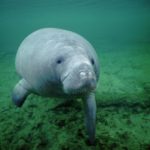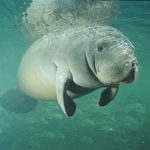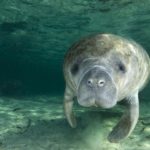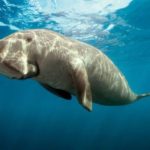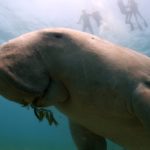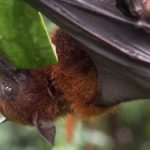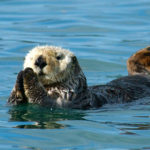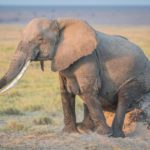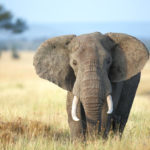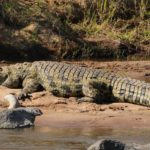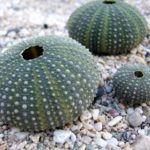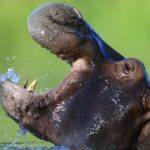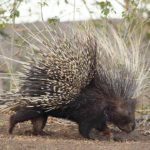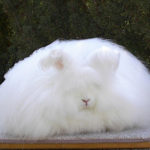Manatees
 Manatees usually live in shallow coastal areas and rivers where they feed on sea grass, mangrove leaves and algae. These herbivores chew food almost half a day, and the necessary minimum of food for their full life is up to 10% of their body weight. With an adult weight of about 500 kg this is quite a lot!
Manatees usually live in shallow coastal areas and rivers where they feed on sea grass, mangrove leaves and algae. These herbivores chew food almost half a day, and the necessary minimum of food for their full life is up to 10% of their body weight. With an adult weight of about 500 kg this is quite a lot!
American and African manatees spend their lives on the threshold between salty and fresh water. They are able to maintain the right balance in the body through an internal regulatory system in which their kidneys play an important role; So manatees make sure that the concentration of salt in the environment is not too high.
Warm water is a prerequisite for American and African species. At low temperatures and a minimum fatty layer, manatees normally feel themselves in water at a temperature of 15 ° C. They may look thick, but this volume is created by the size of their stomach and intestines. In the cold months manatees move to warm waters near power plants. In 2010, Florida lost at least 246 manatees due to extremely low winter temperatures.
Manatees climb to the surface every 3-5 minutes to draw a breath, although they can stay underwater for longer, holding their breath for up to 20 minutes. When they inhale, about 90% of air is involved in the gas exchange in the lungs, while the amount of air that a person inhales and exhales with quiet breathing is about 10% of the vital capacity of the lungs.
Amazonian manatees (Trichechus inunguis) live only in freshwater rivers throughout South America and the Amazon basin. It is difficult to estimate their numbers due to their secretive character and because of the turbid water in which they live. The main threat to this species is hunting with harpoon.
Dugoni spend all their time in the coastal ocean waters of the Indian Ocean and the western Pacific; They do not settle in fresh water. The main difference between dugongs and manatees: the tail of the manatee has the shape of an oar, while the tail of a dugong is the shape of a fork.
The nearest relatives of manatees are elephants. Manatees and elephants originated from the same terrestrial animals more than 50 million years ago, and studies prove that the number of species of manatees previously was much more significant.
Researchers believe that the extinct species, Steller’s sea cow (the largest representative of the order Sirenia) was last discovered in the waters of Japan and the western coast of the United States. In 1741, Georg Wilhelm Steller first described a sea cow that lived in the Bering Sea, fed on brown algae and was unable to dive under water. Only 27 years after the description, this species completely disappeared as a result of uncontrolled hunting and competition for food: sea urchins in those places also actively fed on brown algae.
Christopher Columbus and other early researchers claimed to have seen female figures swimming in ocean waters. It can be assumed that if the travelers stayed in the sea for a very long time, the imagination, the play of light and the glare on the water could play a joke with them: the manatees might well have seemed to them mermaids.
The size of the brain is the smallest of all mammals (in relation to the size of the body). They may not be as smart as dolphins, but they can solve certain tasks. Manatees are also extremely sensitive to touch and can distinguish colors.
Manatee females, as a rule, bring offspring every 2-5 years. Newborn small manatees remain with mothers until the age of two. They feed the kids with milk from the mother’s nipples, which are located at the base of the forelegs. Also, from the age of a few weeks, they begin to graze on underwater pastures from algae.

